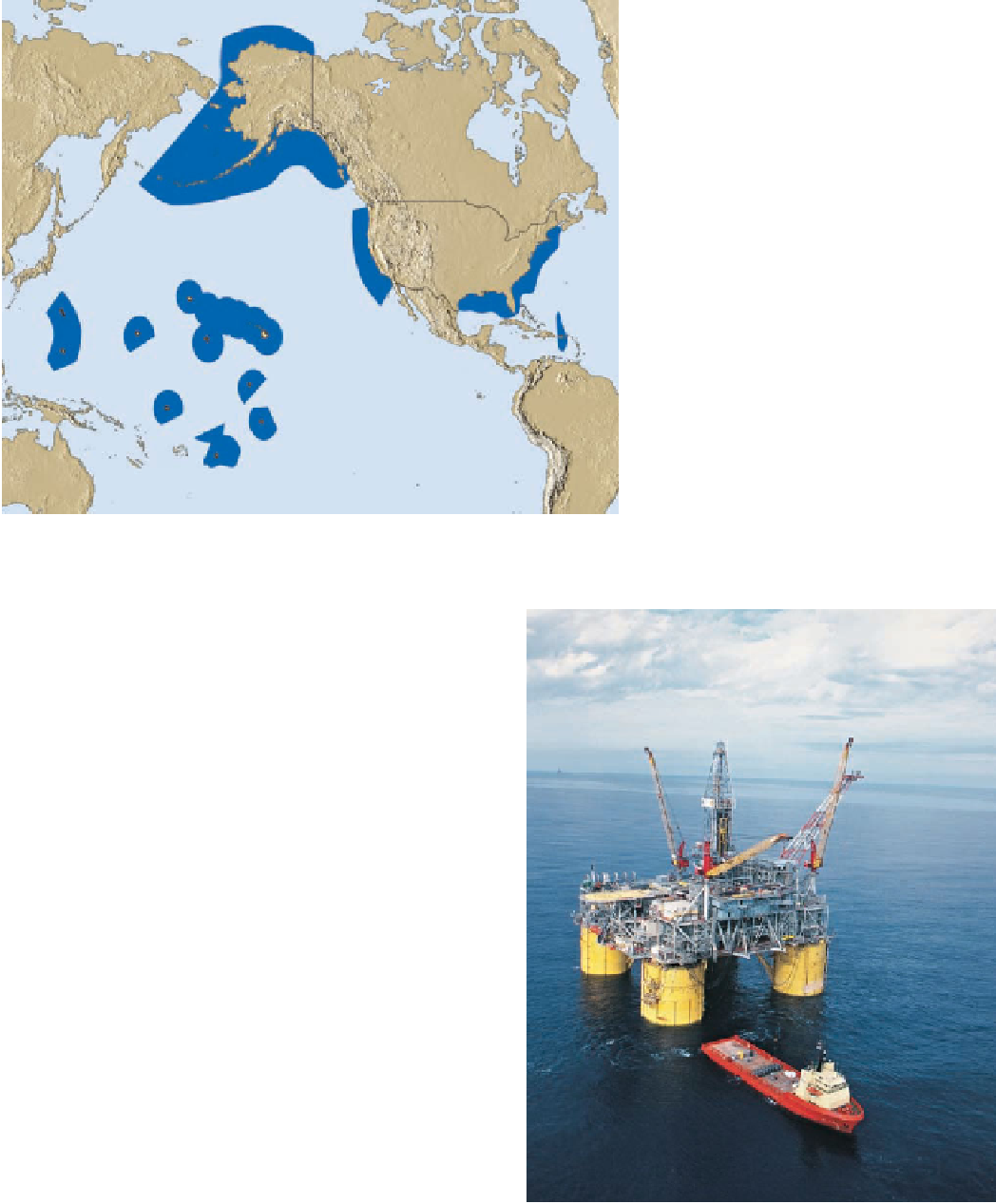Geology Reference
In-Depth Information
1.7 times larger than its land area. Many
other nations make similar claims.
Numerous resources are found
within the EEZ, some of which have
been exploited for many years. Sand and
gravel for construction are mined from
the continental shelf in several areas, and
approximately 34% of U.S. oil produc-
tion comes from wells on the continental
shelf (
Alaska
Figure 9.18). Ancient shelf depos-
its in the Persian Gulf region contain the
world's largest reserves of oil.
A potential resource within the EEZ
is methane hydrate, consisting of single
methane molecules bound up in networks
formed by frozen water. These methane
hydrates are stable at water depths of
more than 500 m and near-freezing tem-
peratures. According to one estimate, the
carbon in these deposits is double that in
all coal, oil, and natural gas reserves. How-
ever, no one knows yet whether methane
hydrates can be effectively recovered and
◗
Northern
Mariana
Islands
Puerto
Rico/
Virgin
Islands
Midway Island
Wake
Island
United States
Guam
Hawaii
Johnston Island
Howland and
Baker Islands
Palmyra Atoll/
Kingman Reef
Jarvis Island
American Samoa
◗
Figure 9.17
The Exclusive Economic Zone (EEZ) Shown in dark blue, the EEZ
includes a vast area adjacent to the United States and its territories.
part of the reef remains in shallow water. However, the is-
land eventually subsides below sea level, leaving a circular
lagoon surrounded by a more or less continuous reef. Atolls
are particularly common in the western Pacifi c Ocean basin.
Many of them began as fringing reefs, but as the plate they
were on was carried into deeper water, they evolved fi rst to
barrier reefs and fi nally to atolls (see Geo-inSight on pages
236 and 237).
Seawater contains many elements in solution, some of which
are extracted for industrial and domestic uses. Sodium chlo-
ride (table salt) is produced by the evaporation of seawater,
and a large proportion of the world's magnesium comes
from seawater. Numerous other elements and compounds
can be extracted from seawater, but for many, such as gold,
the cost is prohibitive.
In addition to substances in seawater, deposits on the
seafl oor or within seafl oor sediments are becoming increas-
ingly important. Many of these potential resources lie well
beyond continental margins, so their ownership is a political
and legal problem that has not yet been resolved.
Most nations bordering the ocean claim those resources
within their adjacent continental margin. The United States,
by a presidential proclamation issued on March 10, 1983,
claims sovereign rights over an area designated the
Exclusive
Economic Zone (EEZ)
(
◗
Figure 9.18
Oil and Natural Gas Wells on the Continental Shelf
This is Shell Oil Company's tension-leg platform
Ursa
in the Gulf
of Mexico about 265 km south of New Orleans, Louisiana. It is
anchored in about 1160 m of water by steel cables that hold the
partly submerged platform in place. It is designed to withstand
waves up to 22 m high and hurricane-force winds of 225 km/hr.
Another tension-leg platform deployed in January 2004 in the Gulf
of Mexico is in water more than 1300 m deep.
Figure 9.17). The EEZ extends sea-
ward 200 nautical miles (371 km) from the coast and includes
areas adjacent to U.S. territories such as Guam, American
Samoa, Wake Island, and Puerto Rico. In short, the United
States claims rights to all resources within an area about
◗





















Search WWH ::

Custom Search